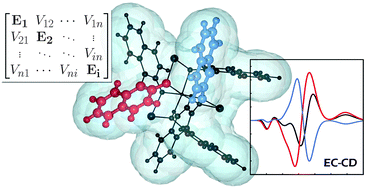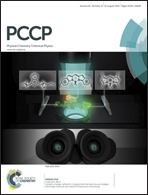A TDDFT/MMPol/PCM model for the simulation of exciton-coupled circular dichroism spectra†
Abstract
We present a quantum-mechanical excitonic model to compute CD spectra of multichromophoric compounds. All the quantities needed to build the excitonic Hamiltonian are obtained through QM calculations in which the interactions among the chromophoric units are described in terms of full transition densities instead of reverting to the common dipole–dipole approximation. Environmental effects due to solvation and the perturbation due to other surrounding units are included in a self-consistent way using a polarizable continuum model and a polarizable MM approach, respectively. The application to two different coordination compounds shows that the method not only successfully reproduces the experimental spectra but it can also be used to investigate and dissect the role of the various effects contributing to the final result, such as intra-molecular coupling terms and environment effects. This method can therefore represent an ab initio-alternative to the widely applied matrix-based approach, and in principle it has the advantage of not requiring the knowledge of any experimental data a priori or the transition dipole parameters.


 Please wait while we load your content...
Please wait while we load your content...